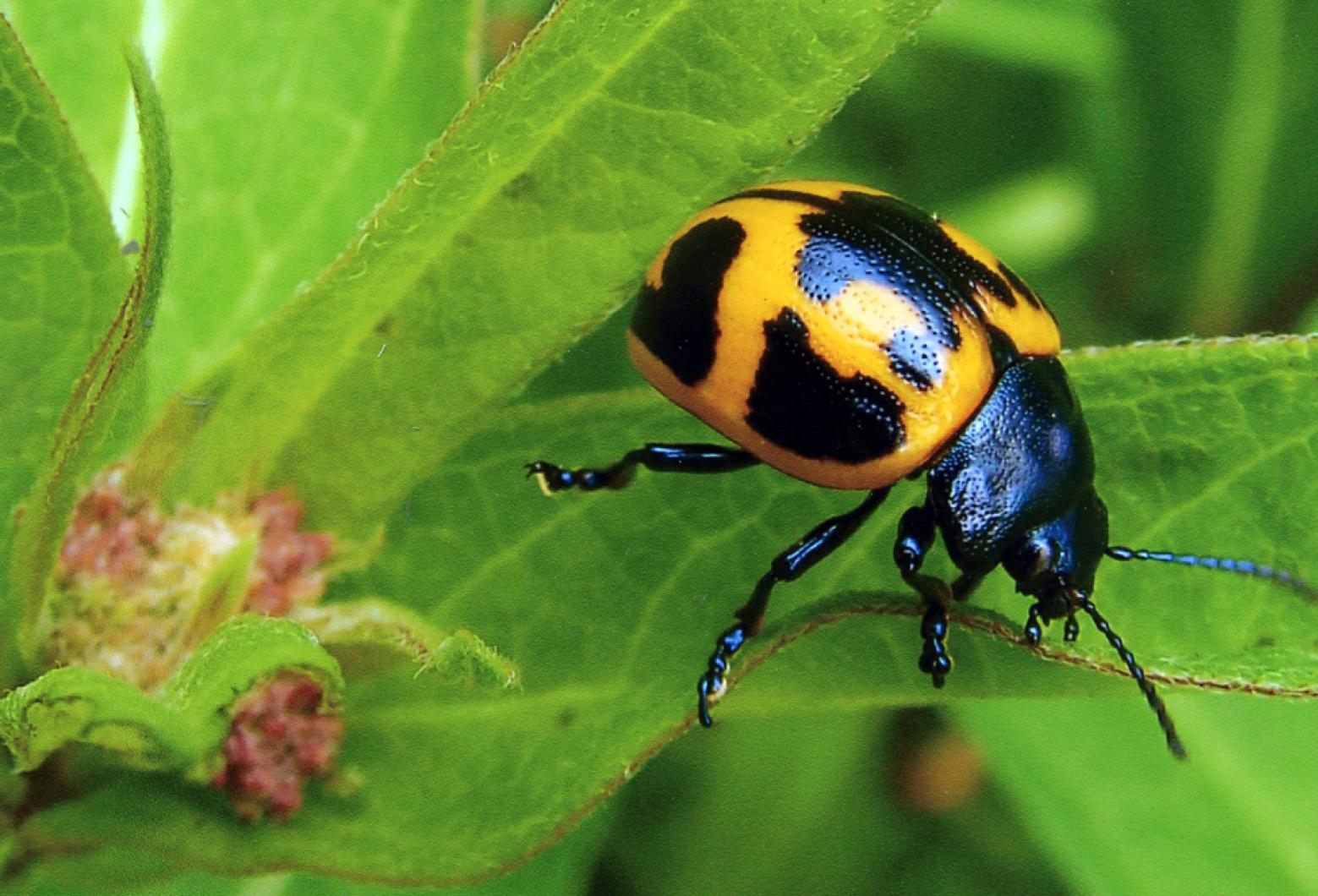All the best quips contain a core oftruth. British biologist J.B.S. Haldane, who spent a lifetime studying the diversity of nature, had this classic answer when someone asked him what he had learned over his long years of study: “God has an inordinate fondness for beetles.”
It is not a surprising observation, when you consider that of all the multitudes of insects on the planet, one out of four is a beetle. Coleoptera, the order in which beetles belong, boasts 370,000 unique species. Beetles are everywhere, including on my mind.
The beetle on my brain is a swamp milkweed leaf beetle, and it is also in the garden. It lounges menacingly on my milkweeds, resembling a ladybug on steroids.
You will know one when you see it. It has the rotund body shape of a ladybug, but islarger. Its coloration is orange and black and it often has a black “X” on its back. In spite of its name, it enjoys eating many types of milkweeds.
There is no reason to be afraid of this phyllophagous or “plant-eating,” beetle. Since it is an herbivore, you are of no interest to itwhatsoever. Not so for the milkweeds, which it will eat with controlledabandon. Its eating habits show a certainpickiness. These leaf beetles dislike the milkweed’s sap and will cut side slits into the veins of the plants to drain the milky liquid before consuming its leaves.
Don’t fear for the milkweeds, as they will survive this infestation. Swamp milkweed leaf beetles are not voracious eaters, and want to preserve much of the plant as possible for future use.
The leaf beetles will employ the remaining healthy plant leaves as holdfasts for their eggs. Yellow oval egg clusters can be found on the underside of the milkweed leaves, and will hatch after one week into white larvae that do not resemble their parentbeetle. These white larvae, or grubs, will drop and overwinter in the leaf litter and below the soil, munching on roots to get through t he leafless winter season.
The swamp milkweed leaf beetle will never be lonely on its milkweed maison . It is one of a group of insects that are part of the “milkweed mimicry complex.” This phrase describes a group of insects that have two things in common: they are associated with milkweed plants, and are colored in a distinctive, deceptive way — they each resemble an insect that derives toxicity from consuming milkweed, such as the monarch butterfly or caterpillar.
This phenomenon, advertising distastefulness through coloring, is called aposematism. Aposematic insects include the viceroy butterfly, some soldier butterflies and the milkweed beetles.
They might just be disguising themselves in the hopes that their predators will avoid eating them, or perhaps they too have some poisonous qualities from eating milkweed. Their predators will never know!
Milkweed, then, is not just for monarchs, as many think. A crowd of critters live, eat, slice and dice, breed and die on milkweed plants. It’s hard to believe that milkweed can survive the onslaught, yet this perennial seems to keep coming back year after year. There’s enough miraculous milkweed to go around — as long as leaf beetles and others don’t milk it for all it’s worth!
Suzan Bellincampi is director of the Felix Neck Wildlife Sanctuary in Edgartown.




Comments
Comment policy »